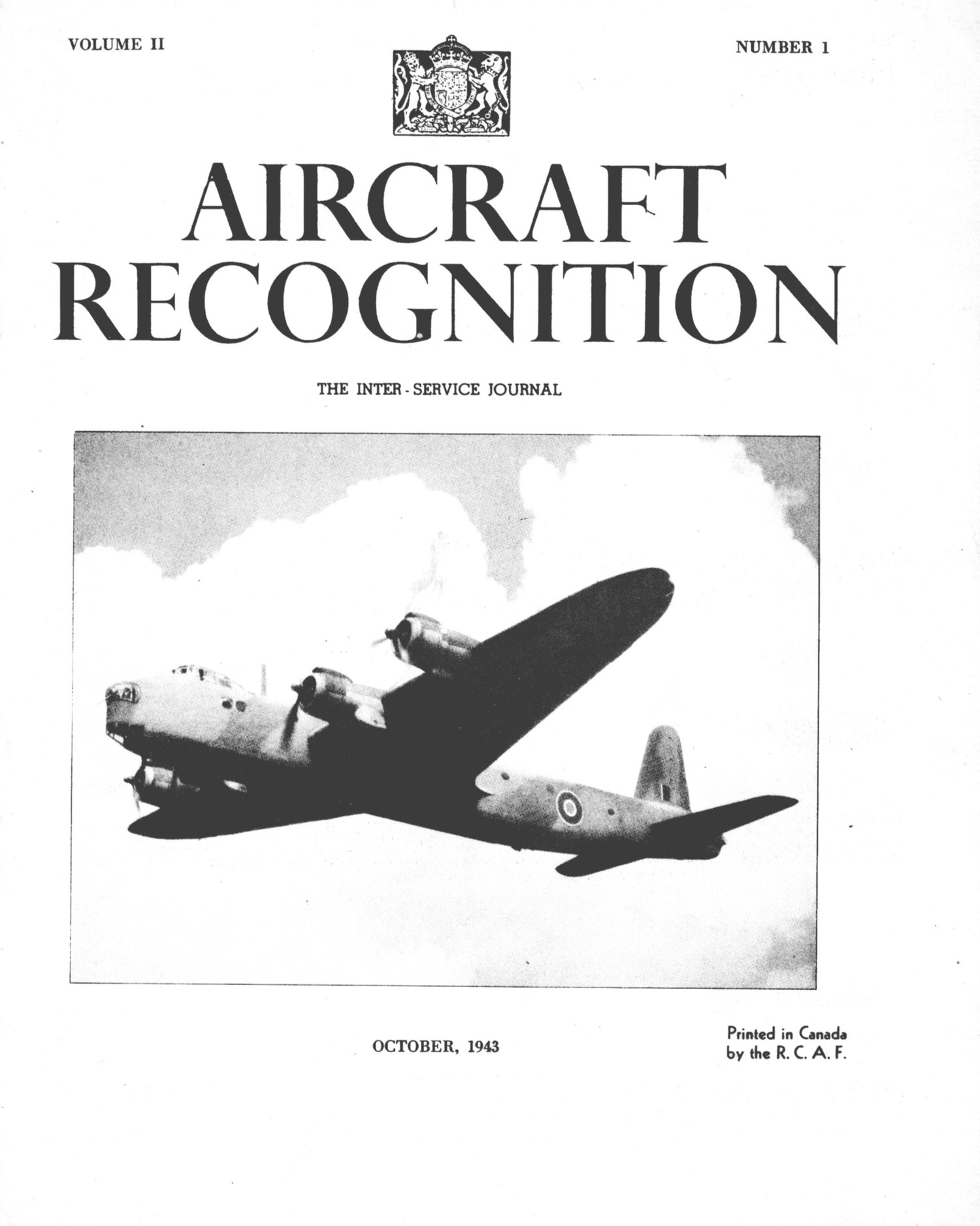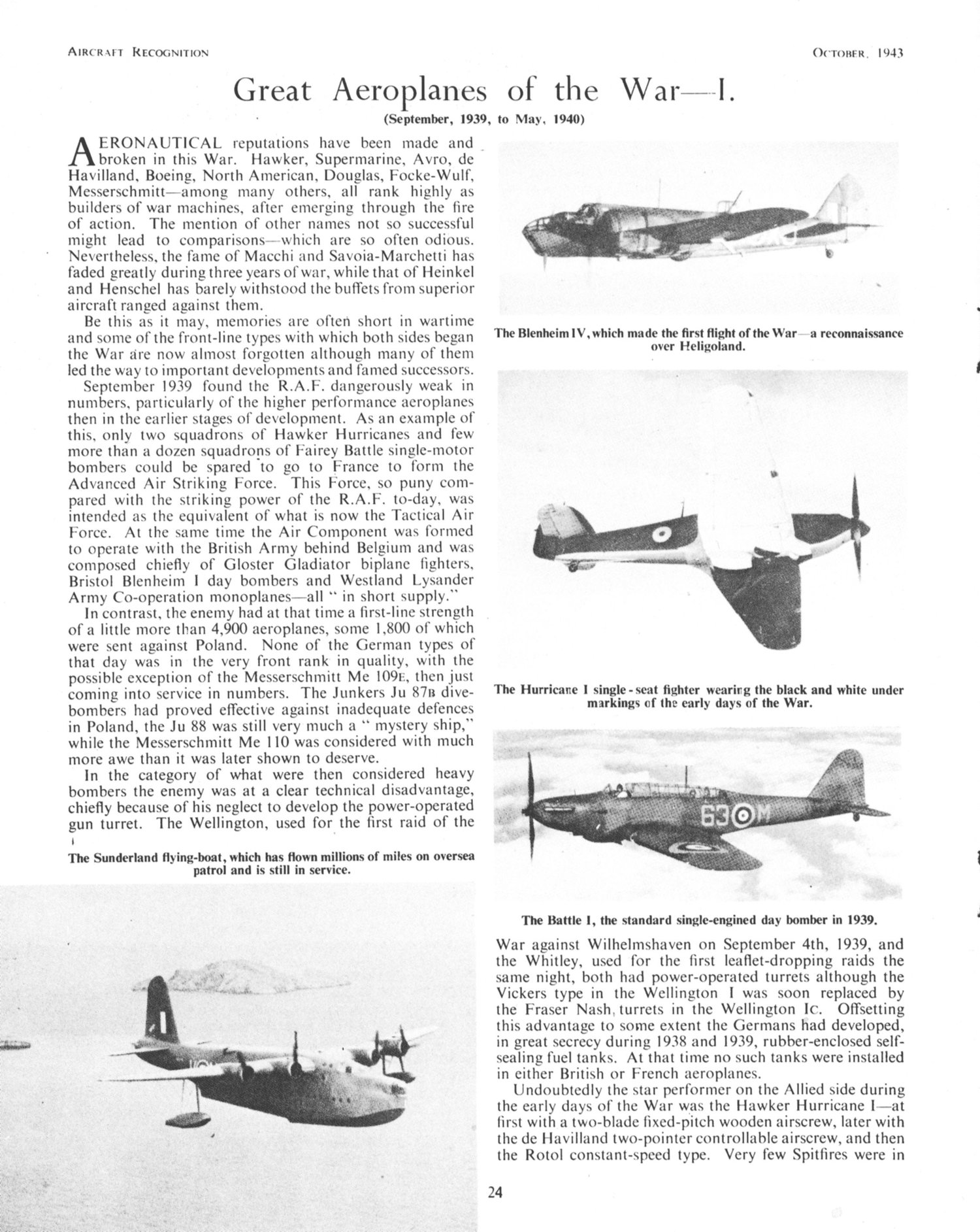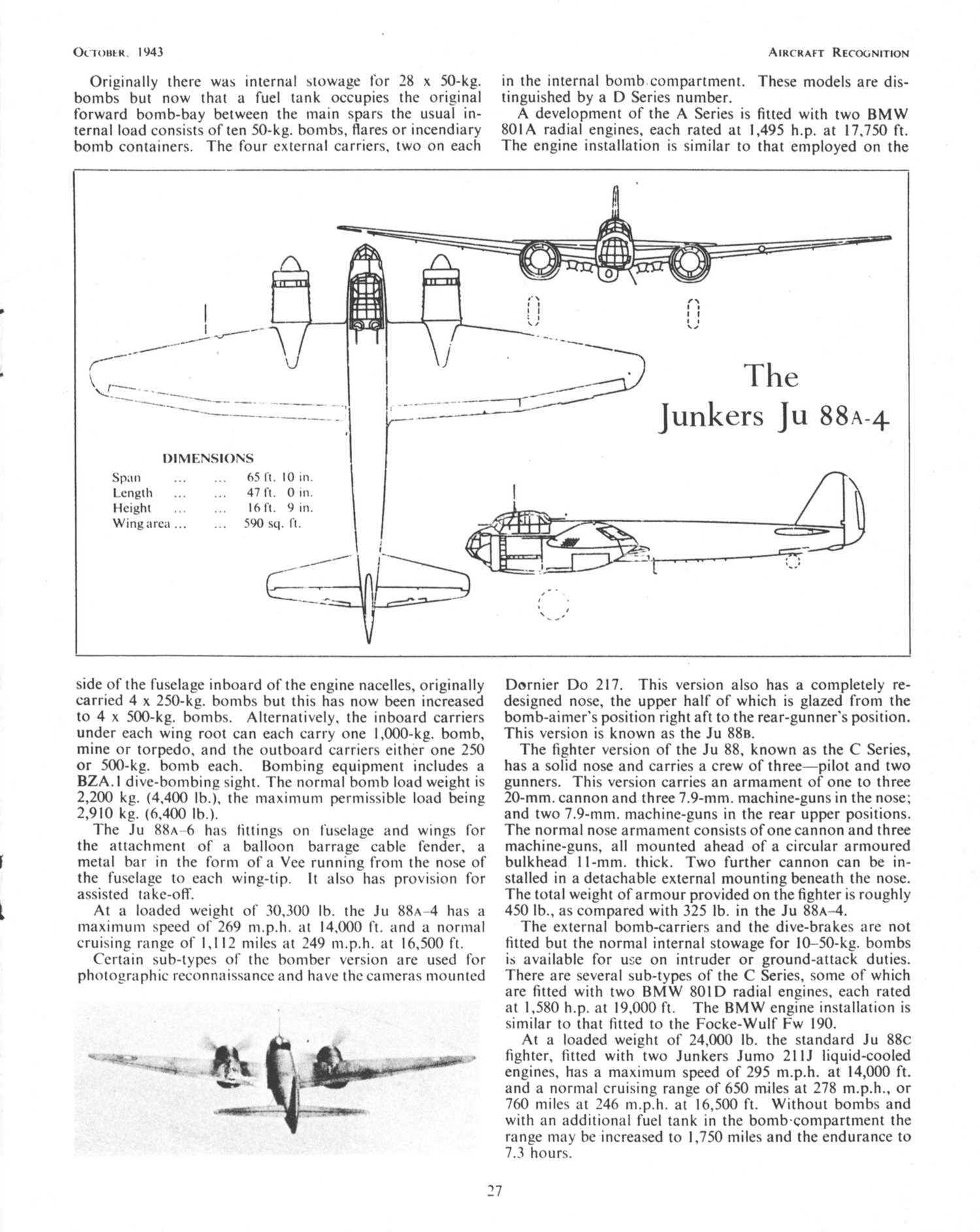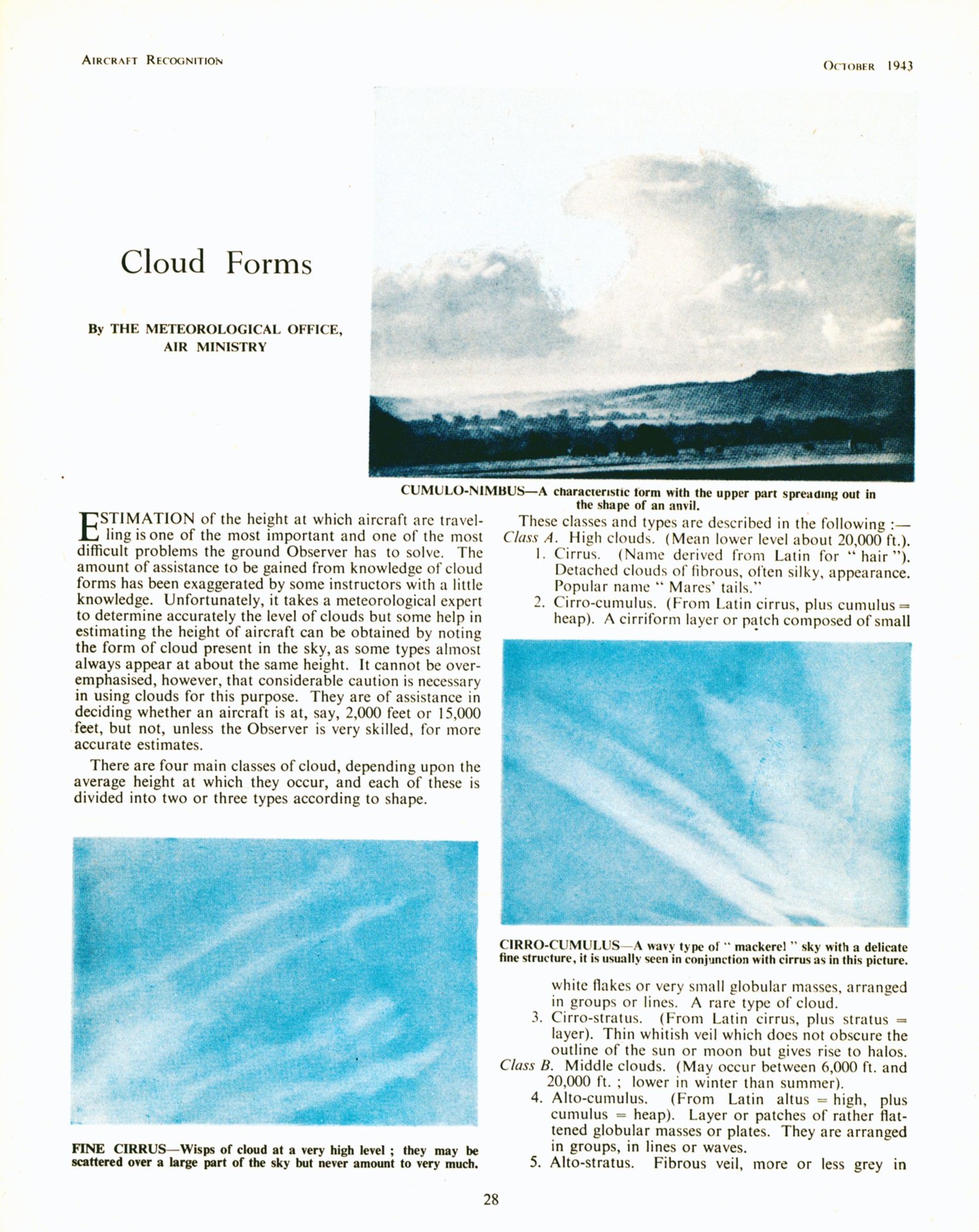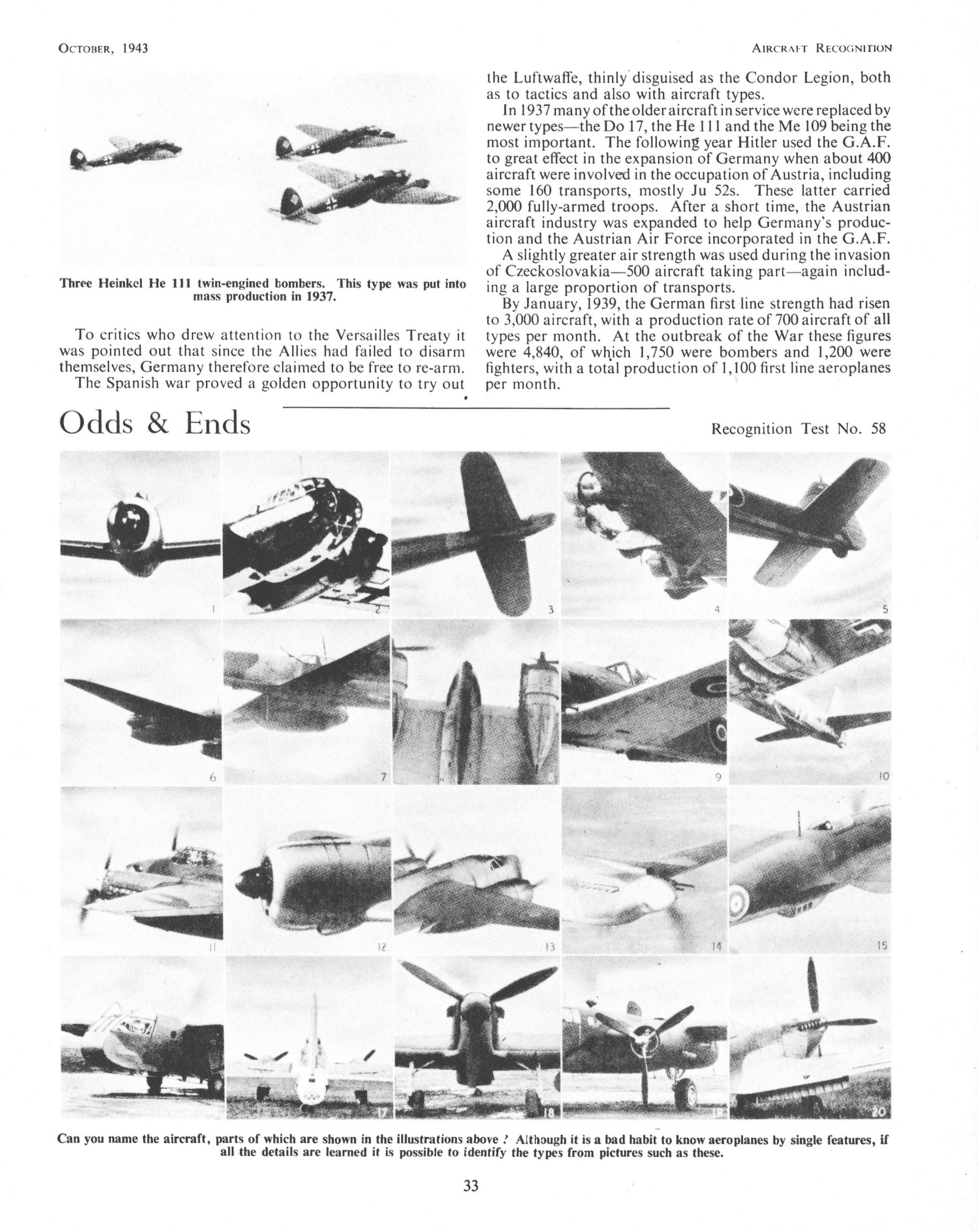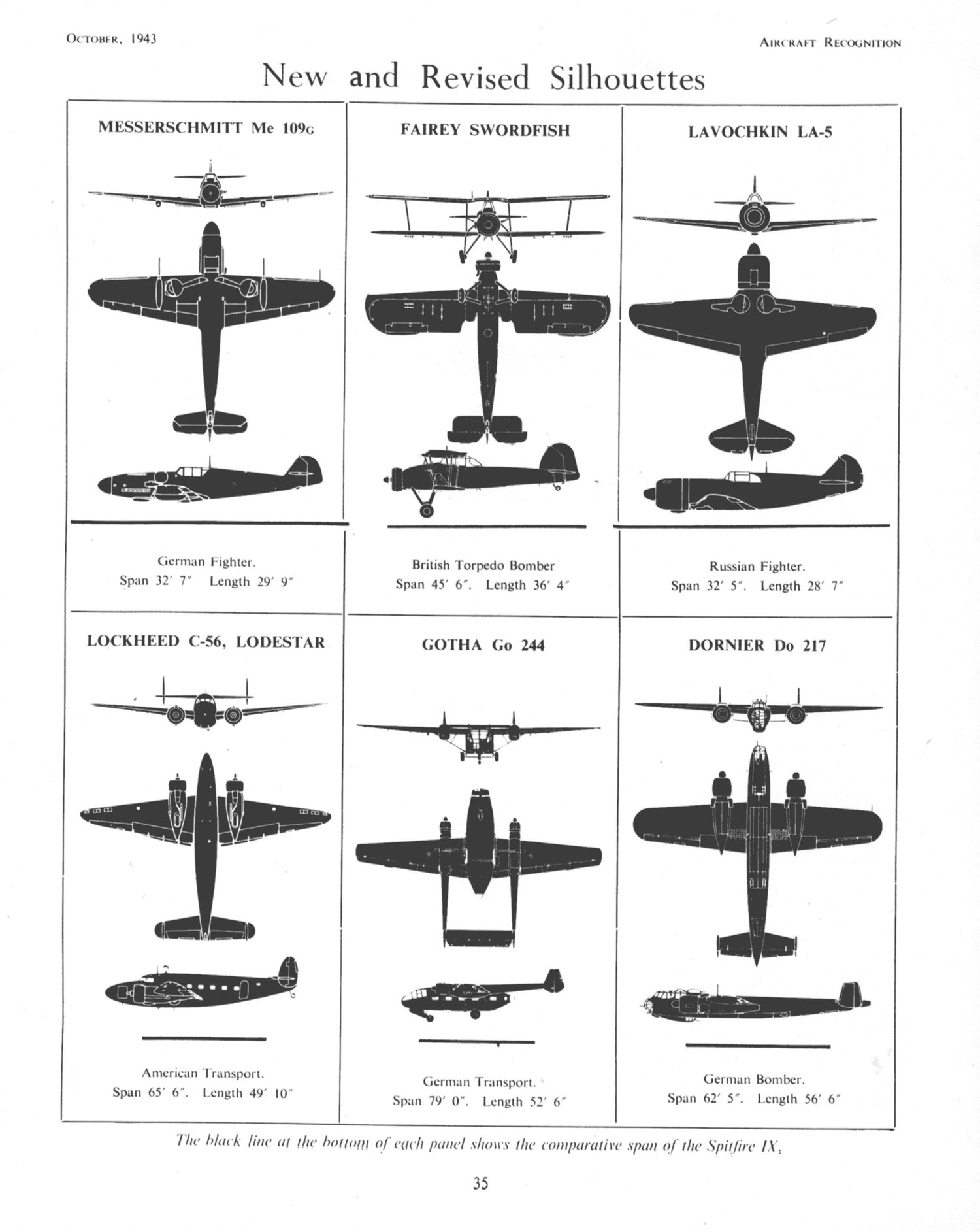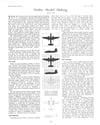Aircraft Recognition: The Inter-Service Journal, Vol II No 1, October 1943, RCAF
Aircraft Recognition
The Inter-Service Journal Vol II No 1 October 1943
Printed in Canada by the RCAF
Air-to-air recognition is one of the most important—and one of the most difficult- branches of the subject. There are no particular views which arc seen more than any other in air-to-air recognition. The plan views are perhaps not quite as important as the others because from this particular aspect the plan view is not likely to be seen until the aeroplane has been recognized from other views. Even so, Spitfires when inadvertently mistaken for other and hostile aircraft often tilt up their wings to show the familiar elliptical form — whether clipped or not — to the erring gunner.
In this, as in all other aspects of aircraft recognition, the fact cannot be stressed too strongly that the only way to be proficient is to know your aeroplanes; know them not merely as lifeless silhouettes or still pictures but as animated personalities with individual characteristics and peculiarities. Furthermore, an aeroplane which may be quite familiar when seen from below may take on quite a different aspect when seen from above or from one of the three-quarter or top views.
An important point in air-to-air recognition is to know the approximate and apparent size of the different aeroplanes at various ranges, thus giving an important and sometimes vital clue to the distance separating the two machines.
Long-range fuel tanks can be most confusing in air-to-air recognition as, in head-On views in particular, they sometimes appear as extra engines when seen from a distance and at other times tend to upset the general lines of the aeroplane. The Focke-Wulf Fw 190 is one case in point; the long-range tanks are slung under the wings and appear directly attached to them. Head-on the resemblance to a two-motor monoplane can be startling. In contrast, the external fuel tanks of the P-47 Thunderbolt are underslung beneath the wing with a deep fairing like those of the Ventura, Lightning and Hurricane—and again are liable to confuse the issue for the unwary.
Modifications of this sort by “hanging things on” instead of building them in —a mania which seems to be particularly prevalent at the present time—should not confound the man who really knows his aeroplanes and is on the lookout for the new and extraordinary and is determined not to be caught thereby.
Contents
- News of the Month
- Great Aeroplanes of the War - I
- The Junkers Ju 88
- Cloud Forms
- The North American A-36 Invader
- A Background to the German Air Force
- Odds & Ends
- Aircraft in the News
- New and Revised Silhouettes
- Utility Model Making
- Silliographs
- Malta Bound
- Flying Photographs
20 pages
159 photos/illustrations

